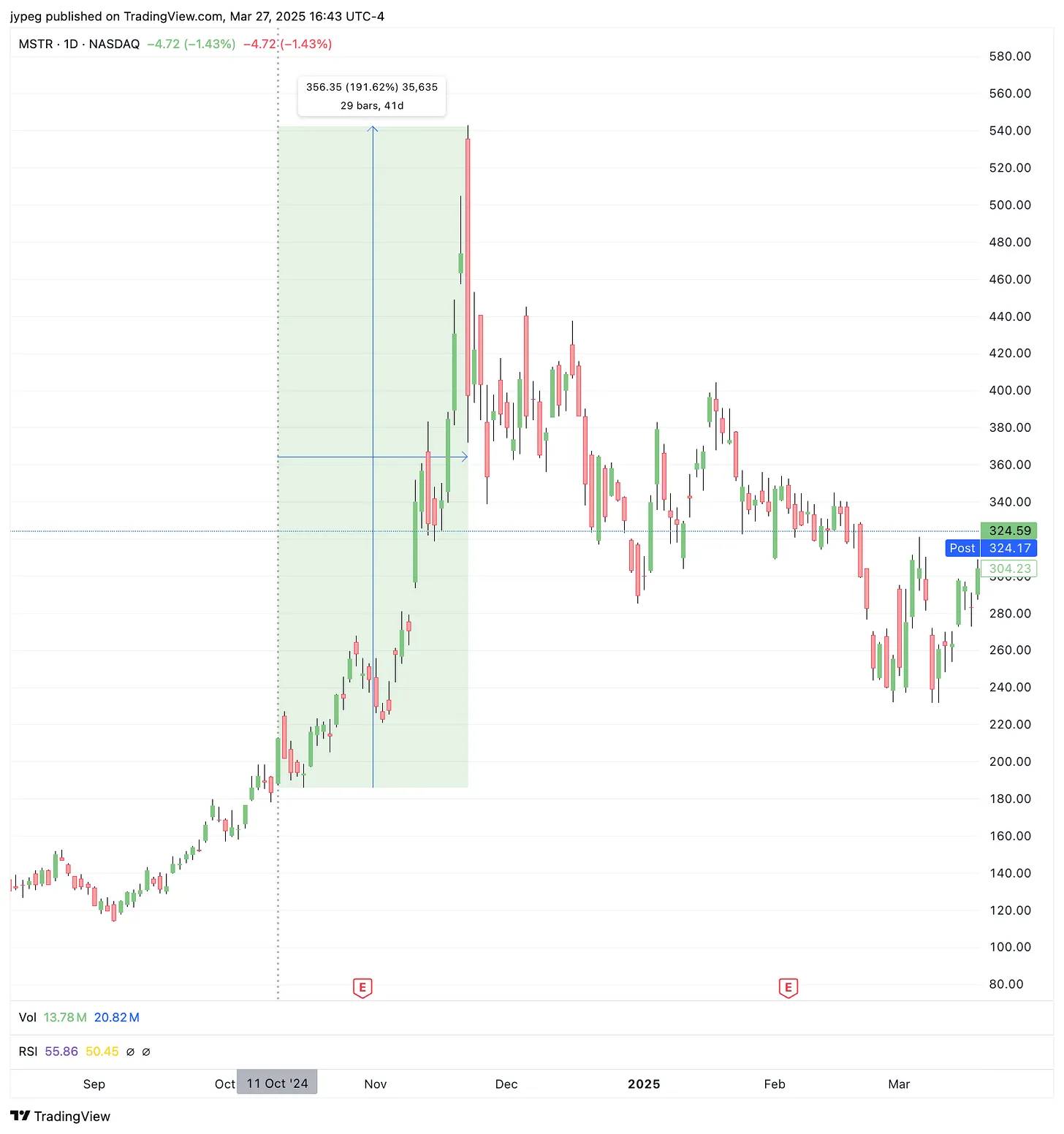Author:JAY
Compiled by: TechFlow
Since October 2024, the share price of Strategy (MSTR) has experienced dramatic fluctuations. It soared from $188 to $540, a nearly three-fold increase, but then fell back and stabilized in the low $300 range.
Behind this stock price trend are a series of important initiatives promoted by the company's founder Michael Saylor, including changing the company's name to Strategy, purchasing more than 506,000 Bitcoins (BTC), and issuing two new preferred stocks STRK and STRF.
However, there are many inaccurate interpretations of how Strategy works in the market. To help investors more clearly assess whether Saylor’s Bitcoin reserve strategy is sustainable, we try to simplify its core logic.

Saylor’s Bitcoin Reserve Strategy: Two Key Points
Saylor's financial strategy can be summarized in the following two points:
Sell stock options and receive a lump sum gain
Strategy sells purchase or conversion options for MSTR shares with exercise prices set at 30% to 300% of the current share price and collects all proceeds in advance through structured transactions. This is mainly achieved through the issuance of convertible bonds and preferred stocks STRK and STRF.
Issue additional shares at the right time
By utilizing the ATM (At-the-Market) mechanism, additional MSTR shares will be issued when market conditions are favorable to further raise funds.
It is important to note that Saylor has no clear plan to repay the principal of these options or bonds. His core goal is to maintain the long-term operation of the financing plan while paying interest until MSTR's stock price rises to the relevant exercise price.
The core advantage of this strategy is its highly flexible financing approach. Using this strategy, Saylor is able to choose the best financing tool according to market conditions:
- When implied volatility is high, issue convertible bonds;
- When the premium to the net asset value (NAV) of MSTR shares is high, additional shares will be issued through the ATM mechanism;
- If none of the above conditions are met, issue more preferred shares (such as STRK or STRF).
The outside world may often worry about the high leverage risk of this strategy, but the data shows that this concern is not true. The following are the key financial data of MSTR:
- Market capitalization: $85 billion
- Bitcoin holdings value: about $44 billion (506,000 BTC);
- Total debt: $8.2 billion, with an annual interest rate of only 0.421%, and annual interest payments of about $34 million;
- Preferred stock dividend payments: $58.4 million per year for STRK and $85 million per year for STRF.
A ratio analysis of these data shows that Saylor's use of leverage is actually very limited and its cost of debt is extremely low.
Bitcoin Reserve Strategy vs. Traditional Banking Model
Strategy's Bitcoin reserve strategy can be compared to the operating model of traditional banks to some extent. The core operating logic of the two is as follows:
Traditional banking model
Banks further leverage themselves through fractional reserve lending, thereby increasing returns, but this model occasionally leads to bank failures.
- Receive deposits from customers;
- Use deposit funds to purchase “safe” government-backed debt (such as Treasury bills, mortgage-backed securities, etc.);
- The interest paid to depositors is lower than the return on debt investments.
Bitcoin reserve strategy
Unlike traditional banks, Strategy's Bitcoin reserve strategy will not use excessive leverage because the government will not provide similar rescue to the banking industry if problems arise.
- Raising funds (similar to banks accepting deposits);
- Use the funds raised to buy Bitcoin (rather than government-backed debt);
- Investors are paid the earnings of MSTR stock and periodic interest or dividends.
Despite the differences in how they operate, the core goal of both models is to achieve profitability through money management. Banks rely on net interest margin (the difference between debt investment income and deposit interest), allowing investors to benefit from a portion of the debt interest passed on by the bank. Bitcoin Reserve, on the other hand, relies on the capital appreciation of Bitcoin, allowing investors to benefit from the volatility of Bitcoin prices (see the more detailed information to understand how this transaction works and why this model is beneficial to convertible bond buyers). This appreciation mainly comes from the increase in the price of Bitcoin or the depreciation of the US dollar relative to Bitcoin.
The Future Potential of Bitcoin Reserve Strategies
Michael Saylor is one of the most staunch advocates of the Bitcoin reserve strategy. His asset management model has successfully attracted many companies to follow suit and has also prompted the US government to begin exploring similar reserve strategies. The continued rise in MSTR and Bitcoin prices has become the best "advertisement" for this strategy, further promoting the market's recognition of the Bitcoin reserve concept.
Although there are still only a few people who truly understand and accept Saylor's strategy, with the development of Bitcoin and MSTR, the market influence and sustainability of this strategy are increasing. The market's attention and feedback in turn promote the success of the strategy. This "reflexivity" may bring more long-term development potential to the Bitcoin reserve strategy.













